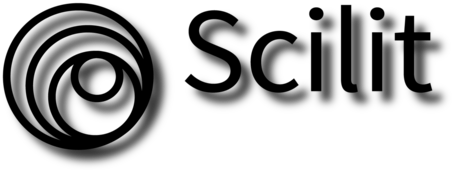Adsorption Kinetic Study of Iron Metal Ions in the Batik Cual Waste onto Freshwater Crab (Parathelphusa convexa) Shell Chitosan
DOI:
https://doi.org/10.11594/timeinphys.2023.v1i2p93-100Keywords:
Freshwater crab, Kinetic adsorption, Chitosan, Batik cual wasteAbstract
Chitosan from freshwater crab (Parathelphusa convexa) shell has been successfully extracted and its kinetic adsorption models for iron (Fe) metal ions in the batik cual waste solution (BCWs) were studied. Freshwater crab chitosan (FwC-Chi) was extracted via demineralization, deproteinization, decolorization, and deacetylation steps. The deacetylation degree value of FwC-Chi was 97.92% determined through FTIR spectra using the baseline method. In this study, iron metal ions distributed in the BCWs homogeneously with the concentration of iron (Fe) was 0.43 mg/L determined by atomic absorption spectroscopy (AAS). The performance of FwC-Chi adsorption on iron in the BCWs with the ratio of 1:100 (w/v) for various contact times of 30, 60, 90, 120, 150, 180, 210, and 240 minutes respectively while stirring homogeneously at room temperature. The result showed that the adsorption kinetic models for iron metal ion in the BCWs follows Behnajady-Modirshahla-Ghanbery (BMG) and pseudo-second-order kinetic model. Based on this model we found that the decrease of iron concentration is indicated by the decolorization of the waste color. It’s clear that there is a relationship between the waste color with the concentration of iron metal in the BCWs. The coefficient of decolorization decay, rate of decolorization and adsorption rate coefficient was 1,366 g-1, 16,053 g min-1, and 0,043 g mg-1 min-1 respectively achieved based on this model.
References
Al Ayyubi, M.S., Farikhah & Safitri, N.M., 2022. The Effect of Chitosan Extracted from Green Mussel Shells Perna viridison Sonneratia caseolaris Mangrove Syrup Preservation. Jurnal Biologi Tropis, 22(1), pp.251-64.
Aldila, H., Dalimunthe, D.Y. & Nuryadin, A., 2020. Ekstraksi Kitosan dari Limbah Cangkang Udang sebagai Adsorben Ion Logam Cu pada Air Pasca Tambang Timah. PROMINE, 8(2), pp.65-71.
Behnajady, M.A., Modirshahla, N. & Ghanbary, F., 2007. A Kinetic Model for the Decolorization of C.I. Acid Yellow 23 by Fenton Process. Journal of Hazardous Materials, 148, pp.98-102.
Dalimunthe, D.Y., Indriawati, A., Hisyam, E.S. & Aldila, H., 2023. sotherm Studies of Cu (II) Adsorption in Kolong Bangka’s Water onto NaOH-Deacetylated Shrimp Shells Waste Chitin (Kajian Isoterm Adsorpsi Cu(II) dalam Air Kolong Bangka denganKitin Limbah Cangkang Udang Terdeasetilasi NaOH). Stannum : Jurnal Sains dan Terapan Kimia, 5(1), pp.1-7.
Darjito, D., Purwonugroho, D. & Ningsih, R.,2014. The Adsorption of Cr (VI) Using Chitosan-Alumina Adsorbent.The Journal of Pure and Applied Chemistry Research, 3, pp.53-61.
Hamdini, M., 2022. Kinetika Reaksi Dekolorisasi Limbah Cair Batik Cual Melalui Proses Oksidasi Maju Berbasis CuO. Skripsi. Bangka: Jurusan Fisika Universitas Bangka Belitung.
Ho, Y.S. & McKay, G., 1999. Pseudo-second Order Model for Sorption Processes. Pro. Biochem, 34, pp.451-65.
Kim, T. & Zoh, K.D., 2020. Removal Mechanism of Heavy Metal (Cu, Ni, Zn, and Cr) in the Presence of Cyanide During Electrokoagulation using Fe and Al elektrodes. Journal of Water Process Engineering, 33(1), pp.101-09.
Kumalasari, 2021. Pengaruh Fraksi Massa HAp Terhadap Nilai Kapasitansi Spesifik Komposit HAp/Kitosan/PVA Dari cangkang Kepiting Sawah. Skripsi. Bangka: Jurusan Fisika Universitas Bangka Belitung.
Livia, Kurniawan, W.B. & Aldila, H., 2022. Pengaruh variasi waktu kontak terhadap nilai efisiensi dan mekanisme kinetika adsorpsi logam besi (Fe) pada limbah batik cual menggunakan kitosan. Jurnal Riset Fisika Indonesia, 2(2), pp.31-36.
Mashuni, M. et al., 2021. Pemanfaatan Kitosan dari Cangkang Kepiting Bakau (Scylla serrata) dengan Metode Microwave sebagai Bahan Dasar Kapsul Obat. ALCHEMY Jurnal Penelitian Kimia, pp.74-82.
Saputra, A., Tiandho, Y. & Afriani, F., 2022. Studi Kinetika Pada Proses Elektrokoagulasi Zat Warna Metilen Biru. Jurnal Riset Fisika Indonesia, 3(1), pp.1-11.
Suprihatin, H., 2014. Kandungan Organik Limbah Cair Industri Batik Jetis Sidoarjo dan Alternatif Pengolahannya. Riau: Pusat Penelitian Lingkungan Hidup Universitas Riau.
Thiandho, Y. et al., 2018. Utilization of Wasted Cockle Shell as a Natural Coagulant and a Neutralizer of Polluted Water in Bangka Blitung Islands, Indonesia. Journal of Physics : Conference Series, 1013(1), pp.1-5.
Tiandho, Y. et al., 2018. Accurate model for temperature dependence of solar cell performance according to phonon energy. Latvian Journal of Physics and Technical Sciences, 55(5), pp.15-25.
Utami, D.D., Widodo, E. & Sjofjan, O., 2013. Pengaruh Penggunaan Tepung Kepiting Sawah (Parathelphusa maculata) dalam Pakan Terhadap Kualitas Karkas Ayam Pedaging. pp.1-7.
Zhang, G. et al., 2020. Efficient removal of Cu (ii), Zn (ii), and Cd(ii) from Aqueous Solution by a Mineral-Rich Biochar Derived from a Spent Mushroom (Agaricus bisporus). Substrate. Material, 14, pp.1-17.
Downloads
Published
How to Cite
Issue
Section
License
Copyright (c) 2023 Fadillah Ramadhani, Widodo Budi Kurniawan, Herman Aldila

This work is licensed under a Creative Commons Attribution 4.0 International License.
Authors who publish with TIME in Physics (Journal for Theoretical, Instrumentation, Material-Molecular, and Education Physics) agree to the following terms: Authors retain copyright and grant the journal right of first publication with the work simultaneously licensed under a Creative Commons Attribution License (CC BY 4.0) that allows others to share the work with an acknowledgment of the work's authorship and initial publication in this journal.
This work is licensed under a Creative Commons Attribution 4.0 International License.





















